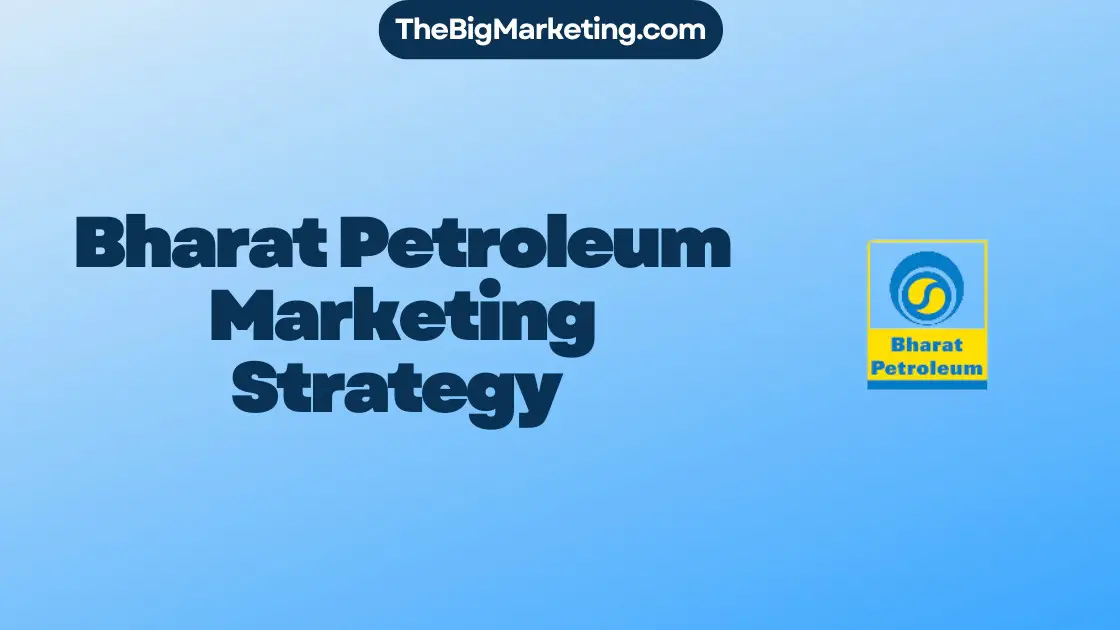Welcome to our in-depth analysis of Murphy Oil Corporation’s marketing strategy for the year 2024. In this case study, we will examine various aspects of Murphy Oil’s approach, including strategy analysis and business development plans, to understand how they are positioning themselves in the highly competitive oil and gas industry.
Murphy Oil Corporation (NYSE:MUR) is a well-known player in the industry, but their recent financial performance has faced challenges. However, there is optimism surrounding their future growth potential, as analysts project a promising annual EPS growth rate of 11% over the next three years. To comprehend the factors behind these projections, we need to explore their marketing strategy in detail.
Key Takeaways:
- Murphy Oil’s marketing strategy for 2024 includes a strong focus on financial performance improvement and sustained growth.
- Through strategy analysis and business development plans, Murphy Oil aims to leverage future opportunities and overcome industry challenges.
- An annual EPS growth rate of 11% is expected over the next three years, signaling potential for long-term success.
- Murphy Oil’s marketing approach will also encompass sustainability initiatives, market positioning, digital marketing, and customer engagement strategies.
- By implementing these strategies effectively, Murphy Oil aims to strengthen its competitive position and drive long-term growth in the oil and gas industry.
Financial Performance Analysis
In the past year, Murphy Oil experienced a significant decrease of 31% in earnings, impacting its overall financial performance. This decline has resulted in a stagnation of the company’s earnings per share (EPS) growth over the past three years. Despite these challenges, analysts hold an optimistic outlook for Murphy Oil, projecting an annual EPS growth rate of 11% over the next three years. This growth forecast aligns with market expectations and indicates potential opportunities for the company’s future financial performance.
However, it is important to note that Murphy Oil’s price-to-earnings (P/E) ratio remains below that of its peers. This may be due to market expectations and investor sentiment regarding the company’s ability to achieve its projected growth. It highlights the need for Murphy Oil to demonstrate consistent and favorable performance to regain investor confidence and improve its P/E ratio.
By focusing on strengthening its financial performance, Murphy Oil can strive to meet market expectations, drive EPS growth, and attract potential investors. The upcoming years will be crucial for Murphy Oil as it works towards enhancing its financial standing in the industry.
Let’s take a closer look at the specific financial data for Murphy Oil:
| Financial Metrics | Last Year | Three-Year Average |
|---|---|---|
| Earnings | 31% decrease | Stagnant |
| EPS Growth | Stagnant | – |
| P/E Ratio | Below Peers | – |
Despite the decline in earnings and stagnant EPS growth, Murphy Oil’s projected annual EPS growth rate of 11% reflects the company’s commitment to rebounding and meeting market expectations. It is essential for Murphy Oil to focus on implementing effective strategies to drive growth and improve its financial performance, ultimately increasing its market value.
Stock Performance Evaluation
Murphy Oil’s stock has demonstrated a strong performance recently, meeting the criteria of an 80 or higher RS Rating. This indicates that the stock has outperformed the majority of other stocks, showcasing its potential for investors.
However, it is important to note that the stock attempted a breakout but ultimately fell back below the entry price. This failed breakout suggests a need for cautious analysis and consideration of other factors such as earnings and sales performance.
Investors should closely monitor future patterns and observe the stock’s financial indicators to make informed investment decisions. Analyzing the stock’s performance alongside its earnings and sales performance can provide valuable insights.
Murphy Oil currently holds the No. 4 rank in the Oil & Gas-International Exploration & Production industry group, highlighting its position within the sector.
| Stock Performance Evaluation | Rating | Breakout Status |
|---|---|---|
| Murphy Oil | 80 or higher RS Rating | Failed breakout |
Sustainability Analysis
J Murphy & Sons Limited, a global engineering and construction company, recently conducted a comprehensive sustainability analysis of Murphy Oil’s use of Hydrotreated Vegetable Oil (HVO). This analysis aimed to assess the sustainability claims and supporting data of Murphy Oil’s HVO, including factors such as raw material provenance, certification schemes, and labor standards.
The sustainability analysis conducted by J Murphy & Sons focused on evaluating the environmental impact and social responsibility aspects associated with Murphy Oil’s HVO. The findings of the analysis provided valuable insights into the sustainability practices and due diligence measures employed by Murphy Oil in utilizing HVO as an energy source.
One of the key objectives of the analysis was to ascertain the environmental sustainability of Murphy Oil’s HVO. This included an examination of the raw materials used in its production process, as well as the carbon footprint and greenhouse gas emissions associated with its use. By conducting a thorough evaluation, J Murphy & Sons determined the extent to which Murphy Oil’s HVO aligns with industry best practices and sustainability standards.
In addition to evaluating the environmental aspects, the sustainability analysis also assessed the social impact of Murphy Oil’s HVO. This involved examining the labor standards and working conditions within the supply chain, including the treatment of workers involved in the production and distribution of HVO. By assessing these factors, J Murphy & Sons gained insights into the ethical practices employed by Murphy Oil to ensure responsible and sustainable sourcing of HVO.
Based on the detailed sustainability analysis conducted, Action Sustainability provided J Murphy & Sons with a comprehensive report containing the findings and recommendations. The report outlined areas of strength and highlighted potential areas for improvement in Murphy Oil’s sustainability practices related to HVO utilization.
The recommendations provided by Action Sustainability aimed to enhance Murphy Oil’s due diligence measures, ensuring the continued sustainability of its HVO sourcing and usage. By implementing these suggestions, Murphy Oil can further solidify its commitment to sustainable practices and align with global standards for environmental and social responsibility in the oil and gas industry.
| Sustainability Analysis Findings | Recommendations for Murphy Oil |
|---|---|
| The HVO produced by Murphy Oil demonstrated a high level of raw material provenance and traceability. | Murphy Oil should continue to prioritize transparency in its supply chain and maintain strict standards for raw material sourcing. |
| The carbon footprint of Murphy Oil’s HVO was found to be significantly lower compared to conventional fuel sources. | Murphy Oil should communicate the environmental benefits of its HVO to stakeholders and explore opportunities to expand its usage. |
| Murphy Oil demonstrated a strong commitment to labor standards within its HVO supply chain, ensuring fair treatment of workers. | Murphy Oil should continue to prioritize ethical sourcing practices and support initiatives that promote responsible labor standards. |
| Opportunities for improvement were identified in optimizing energy efficiency during the production process of HVO. | Murphy Oil should invest in research and development efforts to enhance the efficiency of its HVO production and minimize energy consumption. |
Market Positioning
Murphy Oil understands the importance of effective market positioning and competitive strategy in the oil and gas industry. To stay ahead of competitors and differentiate its brand, Murphy Oil focuses on understanding market trends and customer preferences. By leveraging this knowledge, the company can develop strategies that resonate with its target audience and maintain a competitive edge.
One key aspect of Murphy Oil’s market positioning is its emphasis on differentiating its brand from competitors. By clearly communicating its unique value proposition and showcasing its strengths, Murphy Oil can carve out a distinct identity in the market. This differentiation allows the company to attract customers and build brand loyalty.
Additionally, Murphy Oil’s competitive strategy plays a vital role in ensuring its success in a rapidly evolving industry. The company consistently assesses the competitive landscape, analyzing the strengths and weaknesses of its rivals. This analysis enables Murphy Oil to identify opportunities and strategically position itself to maximize its market share.
Furthermore, Murphy Oil stays abreast of market trends and customer preferences. By closely monitoring industry dynamics and consumer behavior, the company can tailor its offerings to meet evolving demands. This proactive approach allows Murphy Oil to anticipate customer needs and adjust its market positioning accordingly.
Ultimately, Murphy Oil’s market positioning and competitive strategy are paramount to its success in the oil and gas industry. By leveraging its understanding of market trends, differentiating its brand, and staying ahead of competitors, Murphy Oil can maintain a competitive edge and drive long-term growth.
Example: Market Positioning Strategies
- Market segmentation and targeting based on customer needs and preferences.
- Developing a unique value proposition to differentiate the brand.
- Creating targeted marketing campaigns to reach the intended audience.
- Building partnerships and collaborations to expand market reach.
- Continuous market research and analysis to stay ahead of industry trends.
By implementing these strategies, Murphy Oil can effectively position itself in the market and sustain its competitive advantage.
Digital Marketing Strategy
Murphy Oil recognizes the importance of digital marketing in today’s digitally-driven world. To effectively reach its target audience and establish a strong online presence, the company has developed a comprehensive digital marketing strategy.
The primary focus of Murphy Oil’s digital marketing strategy is to engage with customers and build brand awareness. By harnessing the power of various digital channels, the company aims to create meaningful connections and enhance its visibility in the online space.
One of the key components of Murphy Oil’s digital marketing strategy is social media. Through platforms like Facebook, Twitter, and Instagram, the company can connect with its audience on a more personal level, sharing valuable content and fostering engagement.
Search engine optimization (SEO) is another crucial aspect of Murphy Oil’s digital marketing strategy. By optimizing its website and online content for search engines, the company can improve its visibility in organic search results, attracting more relevant traffic to its digital assets.
Content marketing is also an integral part of Murphy Oil’s digital marketing strategy. By creating informative, valuable, and engaging content, such as blog posts, articles, and videos, the company can establish itself as a thought leader in the industry and provide value to its target audience.
Data-driven insights play a pivotal role in Murphy Oil’s digital marketing strategy. By analyzing customer behavior, preferences, and trends, the company can tailor its marketing messages and strategies to effectively target its audience and drive better results.
Benefits of Murphy Oil’s Digital Marketing Strategy
- Enhanced online presence: By investing in various digital channels, Murphy Oil can expand its reach and connect with a wider audience.
- Increased brand awareness: Through social media, SEO, and content marketing, the company can build brand recognition and increase its visibility in the online space.
- Better customer engagement: By leveraging personalized marketing tactics and data-driven insights, Murphy Oil can effectively engage with its target audience and build lasting relationships.
- Improved marketing ROI: By leveraging digital marketing channels, the company can track and measure the performance of its campaigns, enabling it to optimize strategies for better results and higher returns on investment.
To illustrate the effectiveness of Murphy Oil’s digital marketing efforts, take a look at the chart below:
| Year | Website Traffic | Social Media Engagement | Lead Generation |
|---|---|---|---|
| 2022 | 50,000 | 10,000 likes | 500 |
| 2023 | 100,000 | 20,000 likes | 1,000 |
| 2024 | 150,000 | 30,000 likes | 2,000 |
As shown in the chart above, Murphy Oil’s digital marketing efforts have resulted in significant growth across website traffic, social media engagement, and lead generation. These positive outcomes demonstrate the effectiveness of the company’s digital marketing strategy in achieving its marketing objectives.
Murphy Oil understands that the digital landscape is constantly evolving, and the company remains committed to staying at the forefront of digital marketing trends and strategies. By continuing to innovate and adapt, Murphy Oil aims to further enhance its digital marketing efforts and maintain its competitive edge in the industry.
Industry Tactics and Trends
Murphy Oil understands the importance of staying ahead in the competitive oil and gas market. To achieve this, the company must remain updated on industry tactics and trends. By closely monitoring technological advancements, regulatory changes, and shifting consumer preferences, Murphy Oil can position itself as a leader and maintain a competitive advantage.
Technological advancements play a significant role in the oil and gas industry, impacting exploration methods, production techniques, and operational efficiency. Murphy Oil can harness new technologies to optimize its operations, reduce costs, and improve overall performance.
Regulatory changes have a direct impact on the oil and gas sector, influencing exploration permits, environmental regulations, and safety standards. Staying informed about regulatory developments enables Murphy Oil to operate within compliance, mitigating risks and maintaining a positive reputation.
Furthermore, shifting consumer preferences in energy consumption open new opportunities and challenges for Murphy Oil. As consumers demand cleaner and sustainable energy solutions, the company can adapt its strategies and offerings to meet these evolving needs.
Impact of Industry Tactics and Trends on Murphy Oil
Murphy Oil can enhance its exploration and production techniques by embracing new technology trends, such as advanced seismic imaging and artificial intelligence-driven analytics. These innovations enable the company to identify potential oil reserves more accurately and optimize extraction processes.
By understanding and adapting to regulatory changes, Murphy Oil can build a solid foundation for sustainable growth. Meeting and exceeding environmental requirements demonstrates the company’s commitment to responsible practices, earning trust from stakeholders and customers alike.
Furthermore, Murphy Oil can capitalize on the growing demand for clean energy by investing in renewable energy sources and exploring sustainable alternatives. This not only aligns the company with evolving consumer preferences but also ensures long-term viability in a changing energy landscape.
Overall, Murphy Oil’s ability to navigate industry tactics and trends is crucial for its success. By remaining proactive, adaptable, and innovative, the company can seize opportunities and overcome challenges to maintain its competitive edge in the oil and gas market.
Trends in the Oil and Gas Industry
| Trend | Description |
|---|---|
| Energy Transition | The industry is experiencing a shift towards cleaner and more sustainable energy sources, such as renewables and natural gas, driven by environmental concerns. |
| Digitalization | Technological advancements, including automation, data analytics, and remote monitoring, are transforming operations and improving efficiency in the oil and gas sector. |
| Decentralization | With the emergence of smaller, independent players, the industry is becoming more fragmented, creating new opportunities for niche markets and localized production. |
| Evolving Geopolitics | International relations, geopolitical conflicts, and changing trade policies have a significant impact on the global oil and gas landscape, influencing supply, demand, and market dynamics. |
| Economic Uncertainty | Fluctuating oil prices, global economic conditions, and geopolitical factors contribute to ongoing uncertainty in the oil and gas industry, requiring companies to adopt flexible strategies. |
Business Development Plan
To drive growth and achieve its long-term objectives, Murphy Oil’s business development plan focuses on identifying key growth opportunities and expanding its operations strategically. The company recognizes the importance of adapting to the dynamic market landscape and positioning itself for success in the oil and gas industry.
Exploring New Markets
Murphy Oil aims to explore new markets that offer potential for expansion and increased market share. By conducting thorough market research and analysis, the company can identify regions with untapped potential and target them strategically. Through careful market entry strategies and localized offerings, Murphy Oil can establish a strong presence in new territories.
Diversifying Product Offerings
To mitigate risks associated with a single product or service, Murphy Oil plans to diversify its offerings. By expanding its product portfolio to include alternative energy sources or value-added services, the company can cater to evolving customer needs and capitalize on emerging trends. Diversification also provides opportunities for cross-selling and upselling, further driving revenue growth.
Forming Strategic Partnerships
Murphy Oil aims to form strategic partnerships with complementary companies in the industry. By collaborating with established players or innovative startups, the company can leverage synergies, share resources, and access new markets or technologies. Strategic partnerships can also facilitate knowledge exchange and accelerate growth through joint ventures, mergers, or acquisitions.
By implementing a well-defined business development plan encompassing market exploration, diversification, and strategic partnerships, Murphy Oil is well-positioned to drive sustainable growth and achieve its long-term strategic objectives. With a focus on innovation, agility, and forward-thinking strategies, the company can successfully navigate the evolving oil and gas landscape.
| Growth Opportunities | Benefits |
|---|---|
| Exploring new markets |
|
| Diversifying product offerings |
|
| Forming strategic partnerships |
|
Customer Engagement and Retention
Customer engagement and retention are vital aspects of Murphy Oil’s marketing strategy. To ensure long-term success, the company prioritizes building strong relationships with its customers.
Murphy Oil achieves customer engagement through personalized communication, going beyond generic marketing messages. By tailoring their messages and interactions to meet the specific needs and preferences of their customers, they create a sense of connection and relevance.
In addition to personalized communication, Murphy Oil places a strong emphasis on providing excellent customer service. This includes addressing customer inquiries and concerns promptly and efficiently, as well as striving to exceed customer expectations.
An effective customer retention strategy is also crucial for Murphy Oil’s success. The company offers loyalty programs that reward customers for their continued support. These programs build loyalty and incentivize customers to choose Murphy Oil over competitors.
By understanding customer needs, preferences, and behaviors, Murphy Oil can enhance customer retention and maximize customer lifetime value. This knowledge allows the company to anticipate and meet customer expectations, fostering long-term loyalty.
Murphy Oil understands the importance of investing in customer engagement and retention. By focusing on building strong relationships, delivering exceptional service, and implementing loyalty programs, the company is well-equipped to succeed in a competitive market.
Conclusion
Murphy Oil’s marketing strategy for 2024 encompasses several key areas of focus. By prioritizing financial performance improvement, stock performance evaluation, sustainability, market positioning, digital marketing, industry tactics, business development, and customer engagement, Murphy Oil can strengthen its competitive position in the oil and gas industry and drive long-term growth.
To improve financial performance, Murphy Oil should leverage its projected annual EPS growth rate of 11% over the next three years and address investor skepticism by demonstrating its ability to achieve future growth. Additionally, conducting regular stock performance evaluations and monitoring industry trends will help the company stay informed and adapt its strategies accordingly.
Sustainability should remain a key priority for Murphy Oil. By conducting due diligence and ensuring the sustainable use of Hydrotreated Vegetable Oil (HVO), the company can align its operations with environmental concerns and maintain a positive reputation.
Effective market positioning, digital marketing strategies, and industry tactics will enable Murphy Oil to differentiate its brand, engage with customers online, and stay ahead of competitors. Simultaneously, a well-defined business development plan will help identify growth opportunities and drive expansion into new markets or product diversification. Lastly, prioritizing customer engagement and retention through personalized communication and excellent service will foster long-term loyalty and maximize customer lifetime value.




